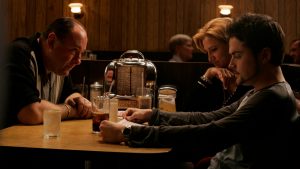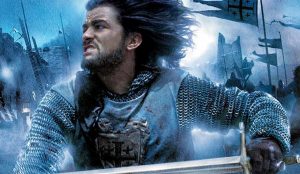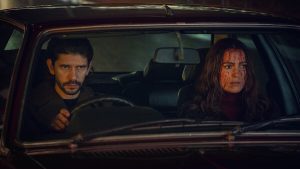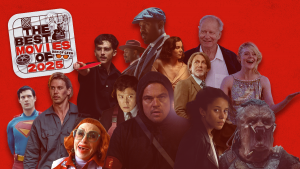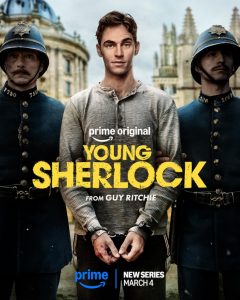
Chances are, if you were even remotely interested in basketball and video games in the ‘90s, there was a strong likelihood that you played NBA Jam. Starting out in the arcades in April 1993, the game was ported to the Super Nintendo and Sega Genesis before kickstarting an entire sports game franchise in itself. Over 30 years later, NBA Jam still holds up, with its fast-paced and frenetic, two-on-two basketball match-ups featuring many of the biggest names of the era.
With plenty of in-game secrets, axed content, and behind-the-scenes tales from its development, there is plenty about NBA Jam that even its biggest fans might not be aware of. Here are all the biggest secrets and fun facts about the iconic basketball video game series.
The NBA Nearly Refused Licensing for the Game
By the early ‘90s, the arcade scene in America, particularly in many of its major cities, took on a seedier reputation than it held during its ‘80s heyday. When the original game’s developer and arcade publisher Midway first approached the NBA about gaining the official license to make NBA Jam, the league didn’t want to be associated with this widespread perception of arcades at the time. After the initial pitch was rejected by the NBA, Midway regrouped for an amended pitch to put the league’s concerns at ease.
In their revised pitch, Midway insisted they would market and push the proposed arcade cabinets towards family entertainment centers and bowling alleys rather than just conventional arcades. To sweeten the deal, Midway offered to pay the NBA $100 for every NBA Jam arcade cabinet it sold. The renegotiations paid off, with the NBA agreeing to these new terms and development on NBA Jam beginning in earnest in 1992.
The Wide Release Lacked the NBA’s Biggest Names
Though the original NBA Jam nominally featured the two biggest names from each team in the league at the time, there were a handful of notable omissions from the playable roster. Michael Jordan and Seattle SuperSonics point guard Gary Payton were both conspicuously absent from both the original game and its subsequent home console ports published by Acclaim Entertainment. Payton didn’t quite make the roster cut whereas Jordan had his own separate likeness licensing agreement outside of the NBA resulting in his exclusion.
Wanting to be in a version of the game for their own enjoyment and willing to pay the cost to make this possible, Payton and Jordan approached Midway for their own custom arcade cabinets adding them both to the roster. As one might imagine, Midway gave both the Jordan and Payton custom player builds heightened stats to make them more appealing to the two paying athletes. More interestingly, despite Jordan and Payton not being on the same team in real life, the custom build allowed them to pair up adding to the uniqueness of the game.
A Mortal Kombat/NBA Jam Crossover Nearly Happened
As Midway began developing NBA Jam in 1992, it was fresh off the success of its other arcade smash hit Mortal Kombat, released that August. Midway dove right into developing a sequel, 1993’s Mortal Kombat II, which was developed concurrently with NBA Jam and alongside NBA Jam’s own follow-up, NBA Jam: Tournament Edition, with the latter released in early 1994. This led to both teams acknowledging each other’s work, including tentative plans for an unofficial crossover between the games by way of secret characters.
The arcade version of Tournament Edition had the Mortal Kombat II sprites for Raiden, Scorpion, Sub-Zero, and Reptile, with each planned as secret characters. Because of the controversy Mortal Kombat was facing at the time due to its gory presentation, the NBA nixed the guest characters’ inclusion, not wanting to be associated with it. Fortunately, for intrepid arcade ROM enthusiasts, all four characters can still be found in the coding for the arcade game.
The NBA Scrubbed Profanity from the Final Game
The NBA’s censorship of NBA Jam to preserve its family-friendly image wasn’t relegated strictly to the approval of secret characters, particularly when it came to Tournament Edition. Shortly after its launch, NBA Jam’s in-game announcer had already become a defining feature for the game, and the developers planned additional lines to be recorded for Tournament Edition. Among the lines recorded was the announcer, after a successful block, shouting “Get that shit outta here!”
Perhaps sensing that the NBA might understandably object to a brief bit of profanity in their officially licensed game, Midway had the word “shit” comedically bleeped out, obscuring it. Even with this self-censorship move, however, the NBA did reject the line outright, leading to its removal from the final game. Fortunately, just like the secret Mortal Kombat characters, the audio files for the line, both uncensored and bleeped out, can still be found in the Tournament Edition arcade version’s coding.
The Chicago Bulls Were Nerfed Against a Specific Team
The lead designer on NBA Jam was Mark Turmell, who was a major fan of the Detroit Pistons, whose arch-rivals at the time were the Chicago Bulls. To give his beloved Pistons an edge against the Bulls, Turmell secretly programmed the game to nerf Bulls’ players’ shooting stats whenever the two teams played against each other. This would specifically impact the Bulls if they were trying to beat the buzzer with game-changing shots.
At the time, the Bulls were at the height of their powers on the court and the sudden decrease in the Bulls players’ abilities became noticeable by observant players. This change was programmed to be highlighted whenever the Chicago team ever tried to take last-second shots, with the coding heightening the chances of the famed Bulls throwing a brick. As a diehard Pistons fan, Turmelll made no apologies about secretly stacking the deck against Chicago.
Shaq Ditched Home Console Versions of the Game
Though Orlando Magic center Shaquille O’Neal was included in the original arcade versions of NBA Jam, his profile had grown quickly and considerably after the game’s release. NBA Jam was in development when Shaq was still in his rookie year in the league but he was awarded Rookie of the Year shortly after the arcade game was released. This led to issues for Acclaim Entertainment when they tried to get Shaq’s likeness rights for his inclusion in console ports for the original game and Tournament Edition.
With Shaq rapidly rising as one of the hottest new superstars in the NBA, licensing his likeness in the console port became more complicated and expensive as, like Jordan, he had purchased his own name and likeness rights back from the NBA. Given this major development since the production of the arcade game, Shaq was replaced by fellow Orlando Magic player A.C. Green. However, the coding for the Super Nintendo port of 1994’s Tournament Edition contains Shaq as a playable character, complete with a player sprite and stats.
Shaq Traveled with His Own NBA Jam Cabinet
Fortunately, there was no bad blood between Shaq and NBA Jam, with the star athlete being a huge fan of the game itself. As Shaq was on the road for months at a time, traveling with the Orlando Magic, he arranged to have an arcade cabinet shipped with him so that he could play whenever he had free time. even when the Orlando Magic weren’t playing at home. In the original arcade build, Shaq personally preferred playing as Golden State Warriors small forward Chris Mullin.
Shaq’s love for NBA Jam persisted for decades and he was reinstated as a playable character in 2011’s NBA Jam: On Fire Edition as part of its NBA Legends roster. In 2022, Shaq teamed up with Arcade1Up for the NBA Jam: Shaq Edition arcade cabinet, which compiled the arcade versions of the original NBA Jam, Tournament Edition, and 1996’s NBA Hangtime. While it may be difficult to ship the Shaq Edition cross-country, the cabinet gives players the chance to play the game like the legendary NBA player.
Turmell Programmed Himself Into the Game
More than just ensuring his Pistons could dominate the Bulls, Turmell decided to add himself to the game as a secret playable character. To unlock Turmell in the arcade version, on the enter name screen, players should highlight “M”, hold down the start button, and press A. Following this, the player should highlight “J”, hold down start, and press C. Finally, the player should highlight “T”, hold start, and press any button to complete the cheat code sequence.
In the arcade version, Turmell’s stats are given an ominous “?” but, rest assured, he has some of the best stats of any player available in the game. Console ports would slightly change up the cheat code input to unlock Turmell, along with making him relatively more balanced, but still a basketball powerhouse. As Turmell and other secret characters were gradually discovered by the public, the mystique behind NBA Jam’s secrets began to grow quickly.
Acclaim Upped the Secret Player Roster
With the internet still years away from being embraced by most American households, the secrets in NBA Jam became the stuff of legend, spread by word-of-mouth. Noticing the buzz secret characters in the game were getting, Acclaim had the developers add several other hidden players to encourage console port sales. The additional secret characters were a mix of celebrities and gag players, conceived by both the developers and Acclaim.
Using cheap Halloween masks, the developers added gag characters like various dinosaurs and a Viking gorilla to the secret roster, though the latter was initially rejected by the NBA. Acclaim had several of their own and Midway personnel added to the game, along with bigger names like then-President Bill Clinton, his Vice President Al Gore, and the godfather of funk George Clinton. The concept of secret characters became a staple for the franchise, with several added to the 2010 NBA Jam revival title.
The NBA Rejected a Mortal Kombat Secret Stage
The planned inclusion of Mortal Kombat characters in Tournament Edition wasn’t the only crossover that the developers had in mind. Mortal Kombat co-creator Ed Boon designed a Mortal Kombat-themed secret stage to be included with either Tournament Edition or NBA Hangtime, which was also published by Midway. Cheekily named the Kombat Kourt, Boon shared an image of the hidden stage through his Twitter account in 2009.
Unfortunately, and perhaps unsurprisingly, just as they had with the Mortal Kombat secret characters, the NBA also rejected the inclusion of a Mortal Kombat secret stage. Boon noted that the backboards being held up by skeletal spinal cords, having the ring of a skull serve as the hoop, and a decapitated head as the game ball were too macabre for the NBA. With the NBA Jam and Mortal Kombat properties now owned by different publishers, it would take one heck of a licensing deal to make such a crossover even possible again.
NBA Jam Planned Including Two Pop Culture Icons
Plans for secret players weren’t limited to the developers, public figures, gag characters, and dropped Mortal Kombat characters. As early development on the original arcade game started in 1992, the team considered adding Godzilla and Bart Simpson to the playable roster. Videos have surfaced online of the developers filming Godzilla and Bart toys against a bluescreen to help with animation and provide a reference for each of the characters.
However, getting licensed characters to appear in any game can be a Herculean task, with permission from the rights holders and, in this case, the NBA needed. With that in mind, both Godzilla and Bart Simpson were quietly shelved, not even appearing in the game’s code. All that remains in the coding are hidden headless player sprites labeled “B” and “G”, with B having yellow skin like Bart and G having green skin like Godzilla.
NBA Jam’s Announcer Became a Sports Game Staple
Arguably the most memorable feature in NBA Jam and Tournament Edition is its energetic announcer Tim Kitzrow, whose delivery was reminiscent of longtime sports broadcaster Marv Albert. Phrases like “He’s on fire!”, “Boomshakalaka!”, and “Fugly shot!” became as readily identifiable with NBA Jam as the actual gameplay itself. The games credit Jon Hey as its scriptwriter, though Kritzrow claims that he improvised most of the lines himself.
By the 1996 follow-up, NBA Jam Extreme, Kitzrow was replaced by Albert as the game’s announcer but went on to serve as the announcer for subsequent Midway sports games. These titles include the enormously popular NFL Blitz series, along with NHL Hitz and MLB Slugfest. Kitzrow returned as the in-game announcer for both the 2003 and 2010 NBA Jam revivals, re-recording many of his classic lines along with a handful of new catchphrases for the games.
One NBA Player Provided Motion Capture for NBA Jam Extreme
After Tournament Edition, Acclaim retained the NBA Jam license to make their own games in the series while Midway went on to launch the NBA Hangtime series. With NBA Jam Extreme starting to use 3D models, instead of the past games’ sprites, and more dynamic gameplay, Acclaim relied more heavily on motion capture to help animate the 3D models. For this, the developers turned to one NBA player to perform all the motion capture for the project: Juwan Howard.
At the time, Howard was playing as the power forward for the Washington Bullets and came in to do all performance capture for the eagerly anticipated sequel. Players’ faces were then scanned, digitized, and mapped onto their individual player models for their final inclusion in Extreme. If all of the players’ movements in NBA Jam Extreme seem uniform to you, remember they’re all coming from one guy as opposed to the players the game is meant to bring to digital life.
NBA Jam Quickly Set Record-Breaking Success
NBA Jam burst on the arcade scene as an instant success, with the original version of the game selling over 20,000 units, earning Midway and the NBA a hefty payday. At its commercial peak, cabinets reported earnings of $2400 in quarters, with the combined cabinets generating $1 billion in quarters within its first year on the market alone. The arcade game became the first ever to earn $2 billion in quarters across its cumulative lifetime earnings.
Both the arcade game and its home console port benefitted from a $10 million promotional campaign that helped raise its public profile considerably. Between the SNES and Genesis ports, NBA Jam sold over six million copies combined and was second only to Donkey Kong Country as the best-selling game in 1994. NBA Jam transcended basketball games and the sports game genre to become a bonafide gaming phenomenon.
The Last New NBA Jam Game Was Released in 2010
After Midway and Acclaim parted ways, NBA Jam never hit the same levels of success the franchise had in the early to mid-’90s and has only sporadically released new games since. Apart from the occasional remasters and commemorative reissues, the last all-new NBA Jam game released was in 2010 for the Wii, PlayStation 3, and Xbox 360. However, as a testament to how far the ubiquity of the franchise had diminished, the PS3 and 360 versions nearly were relegated to digital-only releases.
Though the Wii version had a physical release planned early on, the high-definition PS3 and 360 versions were initially planned to be digital downloads bundled with the home console versions of NBA Elite 11. Following a series of delays, Electronic Arts officially pulled the plug on Elite 11 a month after its intended launch. After this cancellation, EA published the PS3 and 360 versions of NBA Jam as full standalone physical releases later that month before receiving an enhanced digital-only remaster, NBA Jam: On Fire Edition the following year.
The post 15 Things You Never Knew About NBA Jam appeared first on Den of Geek.

